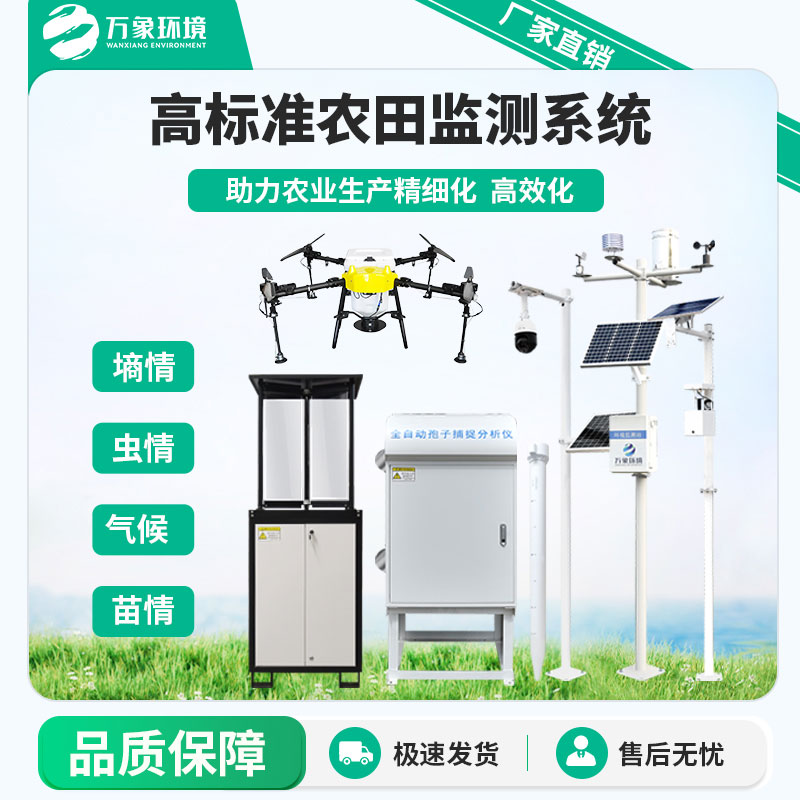1、 Agricultural four situation monitoring system System background
The agricultural four situation monitoring system has achieved refined management of agricultural production, allowing farmers to make scientific decisions based on real-time data, reducing blind operations, and improving agricultural production efficiency.
With the development of smart agriculture, Internet, big data, artificial
intelligence and other technologies are gradually applied to all aspects of
agricultural production, greatly improving the allocation and utilization
efficiency of labor, capital and other production factor resources.
With the help of the Internet of Things, smart agriculture has built an
agricultural production system that integrates environmental monitoring and
precise adjustment. It can monitor and supervise different agricultural
production environments and objects. By detecting the physical parameters of the
environment through sensing devices, real-time dynamic monitoring of the
production environment conditions such as soil, insect situation, meteorology,
and seedling growth can be carried out to meet the standards of agricultural
production environment. The application of these new technologies will greatly
improve the quality of agricultural products, make them meet market demand, and
achieve effective connection between supply and demand, promoting the
refinement, efficiency, and modernization of agricultural production.
2、 Agricultural four situation monitoring system System composition
The system consists of a tubular soil moisture monitoring device, insect
monitoring lights, meteorological station, video surveillance, fence, and cloud
platform.
This system can monitor and manage the soil temperature, soil moisture, pest
and disease conditions (pest and disease types, number of pests and diseases,
etc.), climate conditions (environmental parameters such as air temperature,
humidity, rainfall, light intensity, carbon dioxide, wind speed and direction),
and crop growth in agricultural fields. The data can be uploaded to the
monitoring platform through GPRS/4G or the internet, and management personnel
can remotely view various environmental parameter data and trends in real time,
saving manpower and making corresponding adjustments based on data feedback to
ensure good growth of crops and assist agricultural production.
3、 Platform Introduction
The agricultural four situation monitoring and reporting platform is an
online monitoring platform that integrates pest, meteorological, soil moisture,
and seedling monitoring. Insect monitoring has functions such as automatic
identification of Al pests, remote real-time viewing of insect situation, online
analysis of insect situation, automatic identification of insect species,
regional insect situation statistics, trend analysis of insect situation
changes, and equipment monitoring. Meteorological monitoring has the function of
remote real-time viewing of weather and online analysis of historical
meteorological data. Soil moisture monitoring has the function of remotely
obtaining soil moisture data (such as soil temperature, humidity, moisture, pH)
and online analysis of historical soil moisture data. Seedling monitoring allows
real-time viewing of crop growth images.
2. The monitoring homepage displays menu information such as device list,
large screen visualization, and map display. Display soil moisture, insect
infestation, meteorological monitoring icons, and equipment operating
status.
3. Insect monitoring includes five parts: real-time insect monitoring, insect
analysis, pest species, real-time status, and operation records.
4. Insect situation analysis: Images within the selected time range can be
queried.
5. Insect statistics include regional statistics and trend analysis.
Regional analysis: Select the region, select the time, and click on the query
to find the number of pests in the selected time period's pest control
equipment. Trend analysis: Select the region, choose the time, and click on the
query to find the curve changes of the number of pest species in the region.
6. Meteorological monitoring includes two parts: real-time data and
historical data.
7. Soil moisture monitoring includes two parts: real-time data and historical
data.
8. System management includes four parts: device management, user management,
area management, and system logs.
Product address:
http://www.qxhjjc.com/en/nysiqing/1139.html 

















 Home
Home phone
phone Product Overview
Product Overview Contact Us
Contact Us